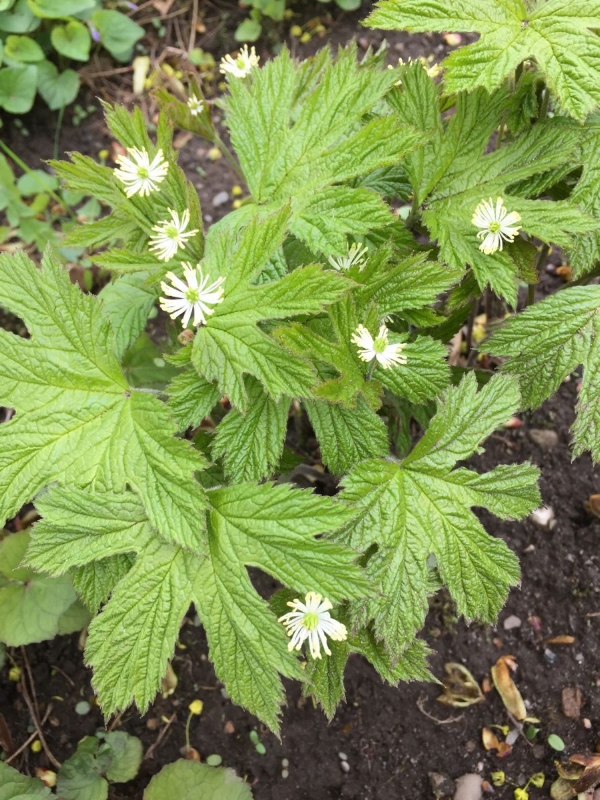Invasive Plants and Preaching to the Choir
I am often asked my opinion on how to best address the ongoing trespasses of invasive plant species. What should be done about invasive plants? But I contend that this is an invasive question and would be better reformed to request and express a curiosity about how to actualize and generate healthy plant and ecosystem communities that are in coherent and non-hostile relationship with the past, present, and future conditions of our local bioregions. Living at the edge of the Adirondack Park where there are all-out declarations of war against certain invasive species calling for the use of heavy artillery herbicides with, seemingly, little attention to the geographical, land-centered history of place, I feel these attacks are a bit short-sighted. To be clear, I’m not saying that it’s ok to just allow invasive species to take over. That would be as equally short-sighted. What I speak of is between, within, and both.
As for what is an invasive plant? Well, that depends on who you ask. Some folks see any plant that’s not native as invasive. Sometimes it’s defined as a “noxious weed”. Many plants that would fall into the list as noxious are plants that I make medicine from, such as dandelions. I see dandelions more as a plant that falls under the category of “naturalized” which means that they have become a natural part of the local flora although at some point in time they may have been invasive. Invasive in other terms is any plant species that overruns, takes hold, and chokes out more desirable plants as well as having a major impact on the local ecology potential producing long-term and possibley permanent changes in the water table, rain fall amounts, soil composition, and biological niches. Purple loosestrife comes to mind here as a plant that, for a time, took over many wetlands in my bioregion and caused a change in the ecological balance by choking out wetlands.
But the way I perceive it is that it’s not invasive vs. native or invasive vs. the rest of the ecosystem. It’s about coming into communication with our field of existence so that we can participate in the creation of life in a way that’s “right.” By “right,” I mean balanced, healthy, beautiful, and resilient. Right does not, in this sense, mean perfect or exclusive of a multiplicity of forms that include the full compass of positive and negative forces. The “right” I envision is not puritanical. It is about humility and sensitivity to our placement within the myriad dreams of the world and how, as humans, we can practice activities that will allow these dreams to weave themselves together in the sands and the soils, for as the words of poet Flannery O’Connor remind us, “Everything that rises must converge.” One dream does not necessarily have to supersede another as a means of survival although our collective reality may so authorize. This is only the truth of our indoctrination and a result of such that engenders our survival to a need for competition, and not our implicit way of being.
I have also been asked if I think it’s possible to completely eliminate invasive plants and re-establish only native plant species. Well, that’s easy: NO. AND, ironically, this question has always come from someone of European descent. Another invasive species. Should we ask this same question of ourselves?
Wild Rose, Multiflora rosa
Many folks are surprised to learn that almost everything we see when we look upon our local fields and lawns here on Turtle Island, including in many of our woods and wild forests, are plants native to Europe along with a smattering of Asian natives such as our widely prolific multiflora rose. Some of this is because non-native species were brought here via colonization and they germinated and took hold, and some is because those same colonizers destroyed the conditions that once held spatial anchor for native plants. If we are to regenerate native plants we must also regenerate native eco-conditoins. Human development, exploitation, pollution, and overall conquest has has eliminated much of the specific necessities that supply the fertile, interdependent characteristics necessary for native plants to thrive and in so doing have eliminated the option of elimination. What was once ancient forest is now lawns, corn fields, and parking lots. The wetlands are polluted, the rivers have run dry. Soil erosion, lack of nutrients, and lack of appropriate fungal mycelial and diverse bacterial soil colonies means that we no longer have the terrain to support a life that once was. Surface eradication techniques such as poisoning, cutting, digging up, and burning invasive plants are incomplete, one-sided actions that at best serve as temporary respites of hope and, at worst, only serve to further pollute and destabilize the ecosystem.
Even if it were possible in some alternate reality to eliminate all invasive plants there are still invasive people. Ecological exploitation, habitat destruction, and continued conquest by capitalist imperialism will not be cured by herbicide eradication programs.
AND PEOPLE TRAVEL AROUND WITH PLANTS.
We are co-conspirators. Every culture on Earth including nomadic tribes, pioneers, explorers and exiles from every corner of the world have been known to carry a plant or two and some seeds in their packs.
PLANTS TRAVEL.
Does that mean give up on the conservation and proliferation of native species? Absolutely not! These too shall rise as we seek to understand and connect with the greater conversation of more-than-human nations we live amongst. In my experience as a plant-worker, naturalist, wild forager, and conservationist, creating native plant sanctuaries with carefully constructed, but organic and wild surroundings is the greatest use of human efforts to establish and re-balance the survival and proliferation of At-Risk and Endangered species.
Eco-activist John Seed speaks of the regeneration of native plant species in this talk about Activism, Deep Ecology, and the Gaian Era and shares his experience and wisdom on this matter:
"If you’d like to have the native species and the native intelligence of a place return after it’s been damaged in any way, or even after it’s been destroyed…no heroic measures are necessary…Basically, what you have to do is to be able to recognize both the native plants and the exotic plants, both from when they first appear out of the ground as tiny seedlings to when they’re fully grown…and pull out the exotics without treading on the native….
There’s one further rule if that, if you have an area that you’re managing in this way, the temptation is always to try and repair the place which is the most severely damaged, and THIS DOESN’T WORK. What you actually have to do is to find the strongest expression of native vigor that’s taking place…and start from there. You start from the strongest area and you start removing the things that are hindering that."
This is type of conservation is based on the Bradley Method that was developed by Joan and Eileen Bradley as a result of their efforts to promote the recovery of the native bush in New South Wales. This method, according to John Seed, is analogous to “preaching the choir.” He says that, “We need to be strengthening the strongest areas and places where people already have some understanding. That’s the place where we need to create as much strength and vibrancy and community there….my answer to the question is community. And getting together with like-minded people and working together.”
In other words, by serving what is already vital and intact, and by protecting our remaining communities of native plants we can set in motion the necessary conditions for the renewal and restoration of a health in all places. This includes learning to grow and plant native plants, identifying appropriate conditions for these to grow, considering how to best eliminate invasive species that might prevent their proliferation. I also consistently practice plant rescuing whereby I will relocate plants that will otherwise be destroyed by farming or development, and by choosing small, manageable plots on my land to start native plant gardens and communities in hopes that they will thrive and proliferate themselves.
Goldenseal, Hydrastis canadensis, that I have cultivated in my garden
Non-native plant species can, in this vein, become allies to the continued growth and strengthening of native plants as many of them are medicinal and can be used as substitutes for threatened and endangered species. Purple loosestrife, for one, can be used as a substitute for native eyebright and can be gathered in quantity. This is a natural way to reduce invasive species and alleviate the pressure of overharvesting. Many naturalized and plants that would be considered “noxious weeds” are highly medicinal and highly abundant.
My work with the entire spectrum of plants from noxiously invasive to naturalized to native has directed me to a practice of learning to identify, listen for, and even track or trail the highest, most intelligent expression of balance amongst species, which, once again falls along the spectrum of experience and expression. The mystery always prevails as perfection is not the generative force of nature but instead, radiant beauty and an unfixed but harmonious dance of converging dreams and forces that serve the divine milieu or the holy in nature.
One of the best resources for native and medicinal plant restoration and conservation is United Plant Savers. UPS provides At-Risk assessment tools, support for the creation and sustenance of botanical sanctuaries, and lots of plant conservation resources. They can be found here: https://www.unitedplantsavers.org/about-ups
For the full talk with John Seed, scientist Lynn Margulis, and herbalist Stephen Buhner go here: https://www.youtube.com/watch?v=Zc99ikb3KXY
For anyone local to the Mohawk Valley and her surrounding foothills there are excellent resources at Spring Farm Cares, a nature sanctuary and botanical garden center:
http://www.springfarmcares.org/nature.htm
And ReSeed a project grown out of Spring Farm Cares:
https://www.instagram.com/reseed_cny/




